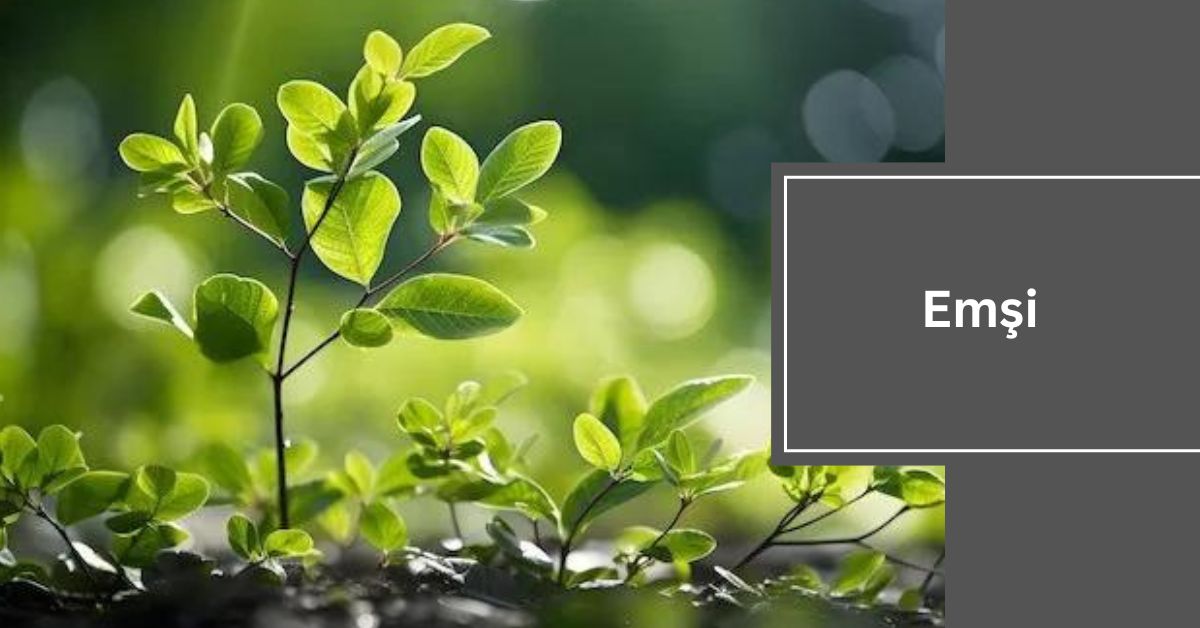Emşi – Support Sustainable Emşi Farming!
After I started using Emşi in my cooking, I noticed a significant boost in my energy levels and overall health. Its rich, nutty flavor made my meals more enjoyable, and I loved how easy it was to incorporate into various dishes
Emşi is a special ingredient with a long history and many uses. It adds great flavor and nutrition to your meals and is loved in both old and new recipes. Learn how Emşi can make your dishes tastier and support a healthier lifestyle.
Get ready to discover Emşi, a unique ingredient that blends history with modern flavor. We’ll cover its origins, uses in cooking, and how it can enhance your meals. Learn how this special ingredient can fit perfectly into your diet.
What Is Emşi?
Emşi is a special ingredient known for its versatility and health benefits. It comes from the fertile crescent and has been used in cooking for centuries. Available in forms like seeds, oils, and powders, emşi adds a unique flavor and essential nutrients to dishes from various cuisines. It’s especially popular for its omega-3 fatty acids, vitamins, and antioxidants, which are great for overall health.

In addition to its culinary uses, emşi has cultural significance in many regions. It’s often linked with prosperity and well-being and is used in traditional ceremonies and celebrations. Today, emşi is valued not just for its health benefits but also for its eco-friendly farming practices. Whether for cooking, wellness, or crafts, emşi remains an important and beloved ingredient.
Read More: Ama77k – Your Creative Projects With Ama77k’s Cutting-Edge Technology!
Where Does Emşi Originate From?
Emşi comes from the fertile crescent, a region known for its rich soil and early farming. This area, which includes parts of Iraq, Syria, and Turkey, was perfect for growing emşi. It has been a key part of local diets for thousands of years because of its health benefits and versatility in cooking.
As farming methods improved, emşi spread to different parts of the world. Today, it is grown in many places, adapting to various climates while still being important in cooking. Its journey from the fertile crescent to kitchens around the globe shows how valuable and loved it remains.
What Are The Main Health Benefits Of Emşi?

- Heart Health: Emşi is rich in omega-3 fatty acids, which are beneficial for heart health. These fats help reduce cholesterol levels, lower blood pressure, and decrease the risk of heart disease.
- Digestive Health: High in fiber, emşi supports healthy digestion by aiding in regular bowel movements and promoting a balanced gut microbiome.
- Antioxidant Protection: Emşi contains antioxidants, such as vitamin E, which help protect cells from damage caused by free radicals, potentially reducing the risk of chronic diseases.
- Anti-Inflammatory Properties: The omega-3 fatty acids and other compounds in emşi have anti-inflammatory effects, which can help reduce inflammation in the body and alleviate symptoms of conditions like arthritis.
- Nutrient-Rich: Emşi is packed with essential nutrients, including vitamins and minerals like magnesium, zinc, and calcium, which support overall health and wellness.
- Skin Health: The healthy fats and antioxidants in emşi can benefit the skin, improving hydration, reducing signs of aging, and promoting a healthy complexion.
How Is Emşi Used In Traditional Cuisines?
In traditional cooking, emşi is used in many different ways to add flavor and nutrition. In Mediterranean dishes, it is often added to recipes like tabbouleh and hummus, where it gives a rich, nutty taste that pairs well with fresh herbs and creamy ingredients. In the Middle East, emşi is used in dishes like baba ganoush and tahini, making these popular foods even tastier.
In Asian cuisine, emşi is included in curries and stir-fries to boost both flavor and health benefits. Its versatility means it can be added to soups, salads, and even baked goods. Emşi’s use in various dishes around the world shows how it fits into many different kinds of cooking.
Are There Any Common Side Effects Of Consuming Emşi?
Eating emşi is usually safe, but some people might have a few side effects if they eat too much. For example, it can cause stomach issues like bloating or gas, especially if you’re not used to eating high-fiber foods. It’s best to start with a small amount to see how your body handles it.

In rare cases, some people might have an allergic reaction to emşi. This could include itching, swelling, or a rash. If you have any problems or feel unwell after eating emşi, it’s a good idea to talk to a doctor.
Read More: 8663359404 – Protect Yourself Against Scams!
What Is The Best Way To Incorporate Emşi Into My Diet?
To add emşi to your diet, start with small amounts and mix it into foods you already enjoy. You can sprinkle it on salads, stir it into smoothies, or add it to soups and stews to give them extra flavor and crunch.
You can also use emşi in baking, like adding it to muffins or bread. It’s great on top of yogurt or oatmeal too. By trying different ways to use emşi, you can find tasty and easy ways to include it in your meals.
What Are The Different Forms Of Emşi Available?

Emşi comes in several forms, each with its own uses. The most common forms are:
- Whole Seeds: These are unprocessed emşi seeds, which can be added to salads or eaten as a snack. They provide a crunchy texture and a mild, nutty flavor.
- Ground Powder: This form is made by grinding emşi seeds into a fine powder. It’s often used in baking or mixed into smoothies, making it easy to blend into various recipes.
- Oil: Emşi oil is extracted from the seeds and used as a cooking oil or salad dressing. It has a rich flavor and can also be used in skincare products.
- Extracts: Emşi extracts are concentrated forms used for adding a strong flavor or nutritional boost to dishes. They are less common but can be found in health food stores.
FAQs:
1. What makes emşi different from other seeds?
Emşi stands out due to its unique blend of nutrients, including high levels of omega fatty acids and antioxidants, which are less common in other seeds.
2. Can emşi be used in gluten-free baking?
Yes, emşi powder can be a great addition to gluten-free baking, providing both texture and nutritional benefits to gluten-free recipes.
3. How should emşi be stored to maintain its freshness?
Store emşi in an airtight container in a cool, dark place to keep it fresh and preserve its flavor and nutritional value.
4. Is emşi safe for people with nut allergies?
Emşi is not a nut but a seed, making it generally safe for people with nut allergies. However, always consult with a healthcare provider if you have concerns.
5. Can emşi be used in vegan recipes?
Absolutely! Emşi is a plant-based ingredient, making it perfect for vegan recipes and a good source of essential nutrients.
Conclusion:
In conclusion, emşi is a unique and valuable ingredient with a long history and many uses. It adds great flavor and nutrition to a variety of dishes and supports good health. As we learn more about emşi and find better ways to use it, it will keep playing an important role in our diets and the environment.
Read More:







